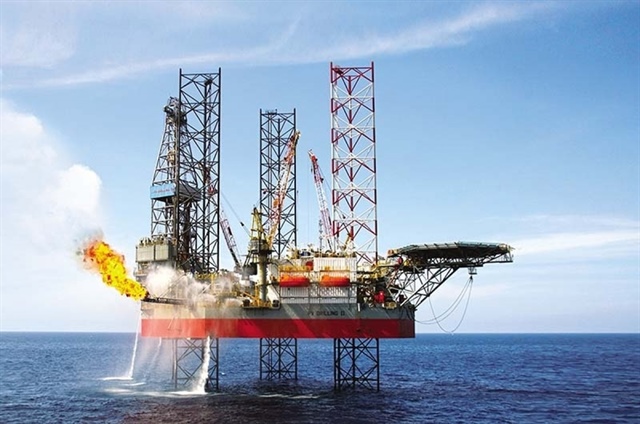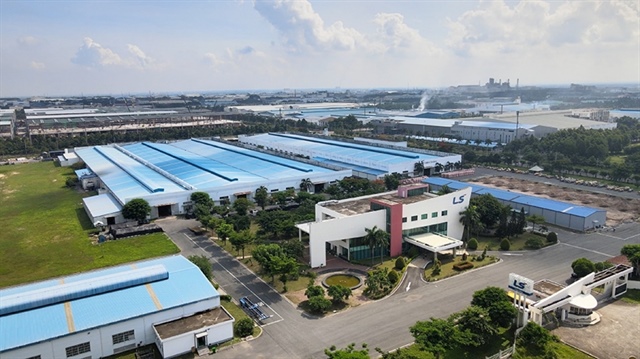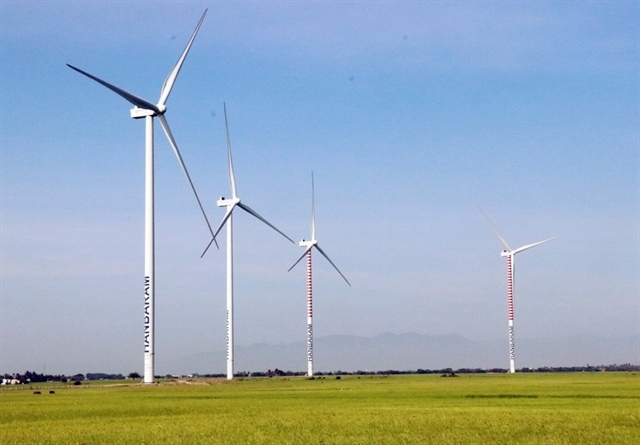Steel industry to grow 12-15%
Steel industry to grow 12-15%
The steel industry is predicted to grow by 12-15 per cent in the next five years, the Viet Nam Steel Association (VSA) reported at a June 12 workshop in HCM City.

Cast iron output is forecast to increase 80 per cent to reach 4.5 million tonnes, while steel billets will jump 47.2 per cent (11.5 million tonnes), finished steel products up 12 per cent (20 million tonnes), cold rolled coils up 13 per cent and steel pipes up 15 per cent.
Attending the workshop, Vietinbank Securities JSC General Director Khong Phan Duc said that although the Vietnamese steel industry’s scale was not large, the sector had competitive advantages, especially in production costs. Duc added that domestic demand for steel remained high thanks to infrastructure projects and rapid urbanisation.
According to VSA Vice Chairman Nguyen Van Sua, Viet Nam’s steel consumption per capita - 195 kg as of 2015 - is low compared to other developed countries, such as China (489kg per person), Japan (497kg per person), the US (297kg per person) or RoK (1,136kg per person). “This shows that the steel industry has tremendous potential for growth,” Sua said.
Strange steel shortage
From 2013-2016, the volume of steel production and consumption grew at an average 21.64 per cent and 25.7 per cent, respectively.
However, although Viet Nam’s steel industry has great potential, the country still has to import a large quantity of steel due to the incomplete value chain and unsynchronised development.
The country imported a lot of hot rolled coils (HRC) and alloy steel as these products can’t be produced domestically. In 2016, Viet Nam imported 22.7 million tonnes of steel, with alloy steel accounting for 27 per cent, HRC making up 24.6 per cent and steel scrap amounting to 17 per cent.
"In the next five years, the trade deficit in the steel industry is expected to decrease as two giant steel makers, Hoa Phat and Formosa, start to produce HRC," Sua said.
To help the industry thrive, VSA Vice Chairman Nguyen Van Sua suggested domestic manufacturers improve their technologies and production lines.
He added that steel makers should build up a particular strategy to invest in the production of hot rolled coil (HRC) or products with good export potential and high profit margin, such as steel pipes and galvanised steel. Sharing this view, General Director of the Nam Kim Steel Joint Stock Company, Pham Manh Hung, proposed diversifying products and optimising production scales to reduce production costs and increase price competitiveness.
Import prices up
Steel imports during the first five months of this year reached 6.83 million tonnes, equivalent to over $3.9 billion, down 12.3 per cent in volume but up 33.3 per cent in value, according to statistics of the General Department of Customs (GDC). According to the Ministry of Industry and Trade, although the volume of steel imports decreased, the value increased because prices rose 50.4 per cent year-on-year,
Meanwhile, imports of iron and steel scrap rose sharply, estimated at 1.68 million tonnes, up 21.9 per cent. The massive scrap steel imports was due to the country’s use of outdated technology, under which scrap steel is one of the main components for steel production, GDC said.
Scrap steel imported to Viet Nam mainly originated from China, Japan, South Korea and India. The total production volume of construction steel in the first five months reached 3.6 million tonnes, up 12.83 per cent year-on-year. Domestic consumption reached 3.4 tonnes, up 3.92 per cent, while exports reached over 370,000 tonnes, up 94.8 per cent.




















